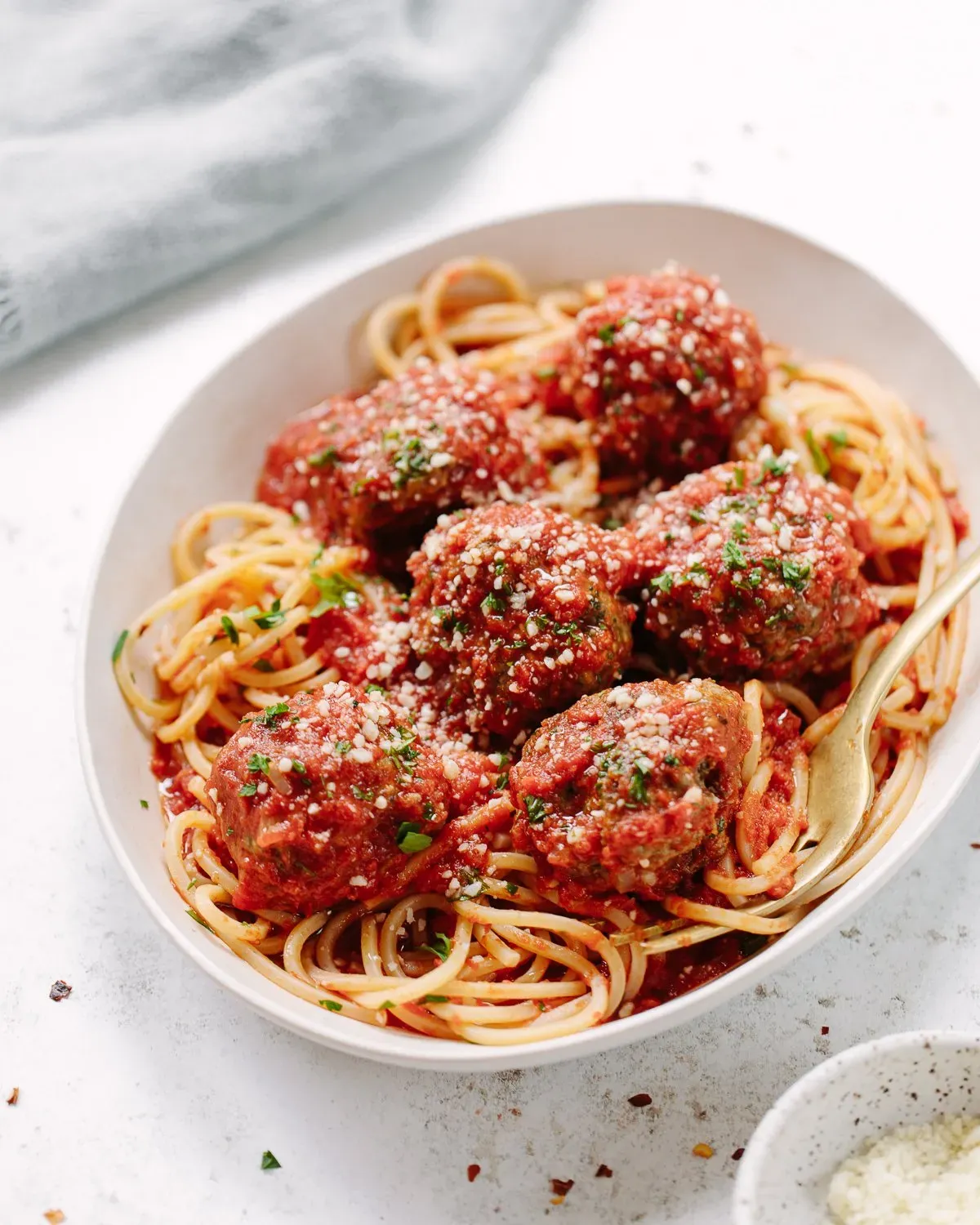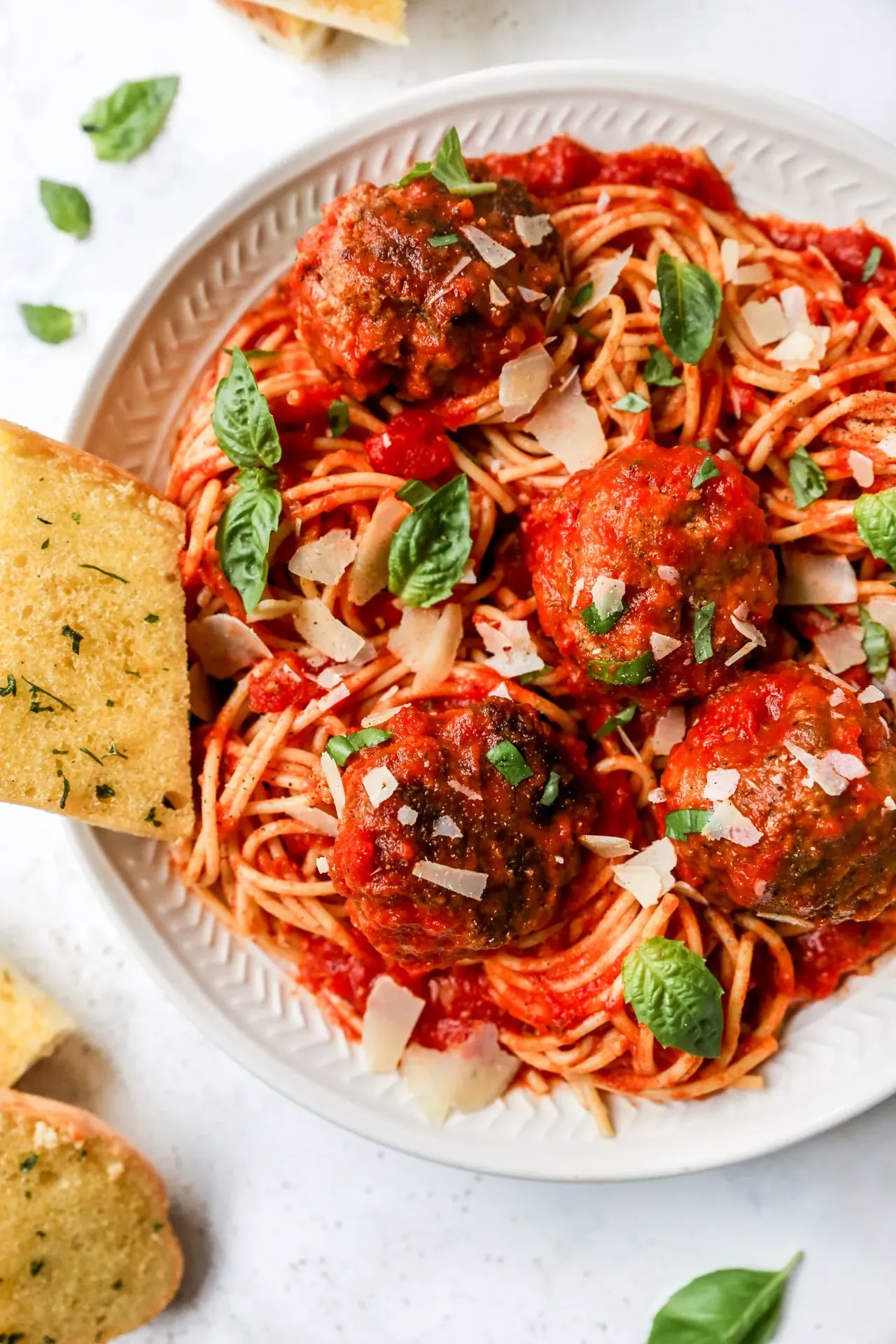Table of Contents
Maybe you've tried making spaghetti and meatballs before, hoping for that rich, comforting taste you remember from a great Italian restaurant or maybe Nonna's kitchen. Did it fall a little flat? It happens. Getting that *real* Italian flavor isn't just about throwing ingredients in a pot; it's about technique, patience, and understanding what makes the sauce sing and the meatballs tender. We're not talking about some quick-fix weeknight meal here, though it can be surprisingly manageable. We're aiming for the kind of dish that fills your home with incredible aromas and delivers a truly satisfying plate of food.
What's the Secret to a Real Italian Spaghetti and Meatballs Recipe?

What's the Secret to a Real Italian Spaghetti and Meatballs Recipe?
It's Not One Thing, It's Everything
Look, anyone promising *one* magic bullet for a real italian spaghetti and meatballs recipe is probably selling something fishy. The truth is, there isn't a single secret ingredient or technique that unlocks the ultimate flavor. It's a combination. Think of it like building a house; you need a solid foundation, good materials, and skilled labor. For meatballs and sauce, that means starting with decent tomatoes, using fresh herbs, picking the right meat blend, and giving it all time. Time is arguably the most underrated "ingredient" here. You can't rush deep flavor. That quick sauce you whipped up in 20 minutes? It's fine. But it won't have the same richness as one that's been gently bubbling away, letting all those flavors meld and deepen. It's the patience, the low heat, the quality of your canned tomatoes, and how you treat your garlic and onion right at the start.
Avoiding the Sad, Dry Meatball Trap
One of the most common complaints about homemade spaghetti and meatballs? The meatballs are dry. Like, saw-dust-dry. This is a culinary crime we need to prevent. The secret to tender, juicy meatballs in your real italian spaghetti and meatballs recipe involves a few key points people often miss. First, don't use super lean meat. A little fat adds flavor and keeps things moist. Second, don't overwork the mixture. Mixing it like you're kneading bread will make the meatballs tough. Gentle handling is key. Third, the binder matters. Breadcrumbs soaked in milk or water, plus egg, create a tender texture. Finally, where you cook them initially makes a difference. Pan-searing gives them color and flavor before they finish cooking in the sauce, locking in juices.
Here’s a quick checklist to avoid dry meatballs:
- Use meat with some fat (like 80/20 ground beef).
- Don't overmix the meatball ingredients.
- Soak your breadcrumbs before adding them.
- Gently form the balls; don't pack them tight.
- Brown them before adding to the sauce.
Building the Flavor: The Sauce for Your Real Italian Spaghetti and Meatballs

Building the Flavor: The Sauce for Your Real Italian Spaghetti and Meatballs
Starting Strong with Aromatics
Every great red sauce, the kind that makes a real italian spaghetti and meatballs recipe sing, begins with a solid foundation. That means your aromatics: onion and garlic. Don't rush this part. Finely chopped onion needs to soften and turn translucent, releasing its sweetness without browning too much. Garlic comes next, added only in the last minute or two before the tomatoes go in. Why? Because burnt garlic tastes bitter and ruins everything. Use good quality olive oil, enough to coat the bottom of the pot, and keep the heat medium-low. This slow, gentle sautéing builds a subtle depth of flavor that you just can't fake.
Tomato Quality Matters, and Time is Your Friend
Now for the star: the tomatoes. Forget watery, bland stuff. For a truly authentic sauce for your real italian spaghetti and meatballs recipe, you need quality canned tomatoes. San Marzano, if you can find them, are the gold standard for a reason – they're naturally sweet and less acidic. Crushed or whole peeled (which you can crush by hand for texture) work best. Pour them in, add a bay leaf, a pinch of salt, maybe a tiny bit of sugar if your tomatoes are acidic, and bring it to a simmer. This is where patience pays off. The sauce needs to bubble gently, uncovered or partially covered, for at least an hour, preferably longer. As it simmers, excess water evaporates, the flavors concentrate, and it transforms from watery tomato pulp into a rich, cohesive sauce.
- Use quality canned tomatoes (San Marzano recommended).
- Start with finely chopped onion and garlic, cooked gently in olive oil.
- Add a bay leaf for depth.
- Simmer the sauce for at least 1-2 hours to develop flavor.
- Taste and adjust seasoning (salt, maybe a pinch of sugar).
Finishing Touches and Flavor Boosters
As your sauce nears the finish line, you can add fresh herbs. Basil is classic, stirred in towards the end or added as a garnish. A sprig of fresh oregano is also nice. Some people swear by adding a splash of red wine early on, letting it reduce before the tomatoes go in, which adds another layer of complexity. Don't be afraid to taste and adjust. Does it need a little more salt? A grind of black pepper? A tiny pinch of red pepper flakes for a hint of heat? This is your sauce; make it yours. This slow-cooked sauce, rich and fragrant, is the backbone of a great real italian spaghetti and meatballs recipe.
Rolling Up Tradition: Making Meatballs for Italian Spaghetti

Rolling Up Tradition: Making Meatballs for Italian Spaghetti
More Than Just Meat: Crafting the Perfect Ball
so you've got that sauce simmering, filling your kitchen with promise. Now it's time for the main event: the meatballs. This isn't just about mixing meat and rolling spheres; it's a hands-on process that connects you to the dish. For a real italian spaghetti and meatballs recipe, the meatballs are foundational. You want them tender, flavorful, and robust enough to hold up in the sauce without falling apart. Forget those pre-made frozen hockey pucks. We're talking about combining ground beef (remember, not too lean!), maybe a little pork or veal for complexity if you're feeling fancy, with soaked breadcrumbs, Parmesan cheese, fresh parsley, garlic, and egg. The magic happens when you bring it all together gently, just until combined. Overmixing develops gluten in the meat proteins, making them tough. You're aiming for tender, not chewy.
Letting it Simmer: Bringing Your Real Italian Spaghetti and Meatballs Together

Letting it Simmer: Bringing Your Real Italian Spaghetti and Meatballs Together
The Grand Union: Meatballs Meet Sauce
you've got that beautiful, rich sauce humming along, and your perfectly formed meatballs are browned and ready. This is where the real magic happens, the step that truly defines a real italian spaghetti and meatballs recipe. Gently nestle those browned meatballs into the simmering sauce. Don't just dump them in; give them a little space, ensuring they're mostly submerged. The sauce will finish cooking the meatballs, making them incredibly tender, while the meatballs will release some of their delicious juices back into the sauce, deepening its flavor profile even further. This isn't a quick dip; you need to let them simmer together, covered or partially covered, for at least 30 minutes. An hour is even better if you have the time. This shared cooking time is essential for creating that cohesive, deeply flavored dish you're after.
Serving and Storing Your Delicious Italian Creation

Serving and Storing Your Delicious Italian Creation
Serving and Storing Your Delicious Italian Creation
Alright, the hard part (the waiting!) is over. Your real italian spaghetti and meatballs recipe is ready. Ladle that rich sauce and those tender meatballs over your favorite pasta – spaghetti is classic for a reason, but don't let anyone tell you penne or rigatoni won't work. A sprinkle of freshly grated Parmesan cheese is non-negotiable, and some torn fresh basil leaves add a pop of color and freshness. Don't skimp on the bread for soaking up every last drop of that incredible sauce. Now, what about leftovers? This stuff actually gets *better* the next day as the flavors continue to meld. Store the sauce and meatballs separately from any leftover cooked pasta if possible; pasta can get gummy when stored in sauce. Keep them in airtight containers in the fridge for 3-4 days. For longer storage, both the sauce and meatballs freeze beautifully for up to 3 months. Thaw them in the fridge overnight and gently reheat on the stove, adding a splash of water or broth if needed to loosen the sauce.
Putting a Fork in It
So there you have it. You've wrestled with tomatoes, coaxed flavor out of humble ingredients, and shaped meat into glorious spheres. It wasn't instant gratification; good food rarely is. But the payoff for tackling a real italian spaghetti and meatballs recipe this way is a dish that actually tastes like something worth the effort. No sad, watery sauce or tough, flavorless meatballs here. Just honest, comforting food that reminds you why some classics are, well, classic. Now go eat it before someone else does.